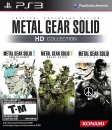Outch.
I don't know German... so I will use the GAF translations.
GAF TRANSLATION
|
Although both upcoming game consoles Xbox One and PlayStation 4 are based on AMD hardware, only PlayStation 4 incorporates hUMA [Heterogeneous Uniform Memory Access] for supporting a shared memory space. This was explained by AMD's Senior Product Marketing Manager Marc Diana to c't [big German IT magazine] at gamescom. This should put the 3D-performance of PlayStation 4 much farther ahead of Xbox One than many have expected so far. AMD sees hUMA as a key element for drastic performance improvements in combined processors. AMD's upcoming Kaveri desktop processors support hUMA as well. |
hUMA: Heterogeneous Uniform Memory Access
|
Even with the integration of GPUs and CPUs into the same chip, GPGPU is quite awkward for software developers. The CPU and GPU have their own pools of memory. Physically, these might use the same chips on the motherboard (as most integrated GPUs carve off a portion of system memory for their own purposes). From a software perspective, however, these are completely separate. As well as being useful for GPGPU programming, this may also find use in the GPU's traditional domain: graphics. Normally, 3D programs have to use lots of relatively small textures to apply textures to their 3D models. When the GPU has access to demand paging, it becomes practical to use single large textures—larger than will even fit into the GPU's memory—loading the portions of the texture on an as-needed basis. id Software devised a similar technique using existing hardware for Enemy Territory: Quake Wars and called it MegaTexture. With hUMA, developers will get MegaTexture-like functionality built-in. |
GAF INSIDER
| Our guy on the ground has heard this as well from multiplatform developers and publishers. Their PS4 game builds are significantly outperforming the Xbox One game builds. |
GAF EXPLANATION
| On a classical system you have a RAM pool and a VRAM pool that are physically speperated. Copying data from one pool to the other creates latency. The GPU is very good ad hiding latency. What it needs most is high bandwidth. The CPU on the other hand is extremely sensitive to latency. The CPU needs extremely low latency to work efficiently. Copying data from the RAM (CPU) to the VRAM (GPU) creates latency, but that's okay for the GPU. Copying data from RAM (CPU) to VRAM (GPU) and back to the RAM (CPU) creates even more latency. It's too much for the CPU. The copying alone takes longer than the computation wich makes this roundtrip highly ineffective. Xbox360 and older APUs have a unified RAM. This means that the RAM is no longer physically seperated, but even though it's the same RAM chips, the system still distincts between memory partition for the differenct processors. You still need to copy the data between CPU partition and GPU partition, but this will be much more efficient than copying it between physically seperated pools. But it's still too much latency for a CPU, GPU, CPU roundtrip. PS4 will have hUMA wich means that you no longer need a distinction between CPU partition and GPU partition. Both processors can use the same pieces of data at the same time. You don't need to copy stuff and this allows for completely new algorithms that utilize CPU and GPU at the same time. This is interesting since a GPU is very strong, but extremely dumb. A CPU is extremely smart, but very weak. Since you can utilize both processors at the same time for a single task you have a system that is extremely smart and extremely strong at the same time. It will allow for an extreme boost for many, many algorithms and parts of algorithms. On top of that it will allow for completely new classes of algorithms. This is a game changer. |
Everything here: http://www.neogaf.com/forum/showthread.php?t=657221























